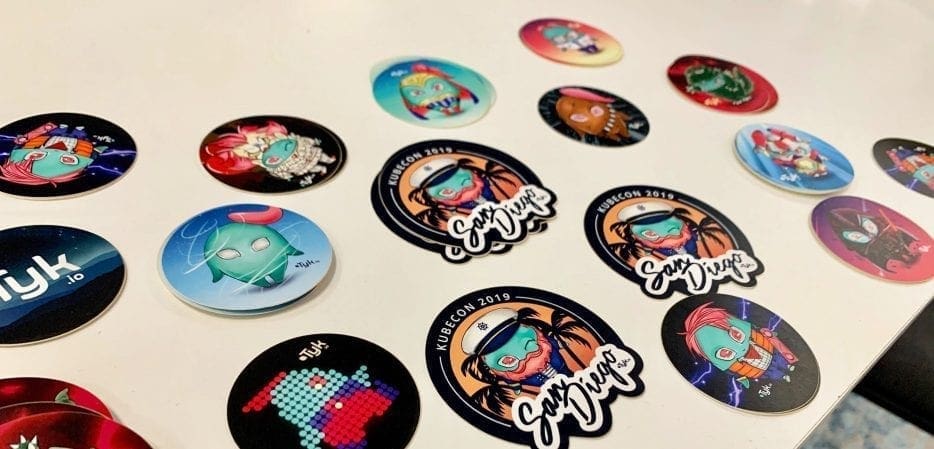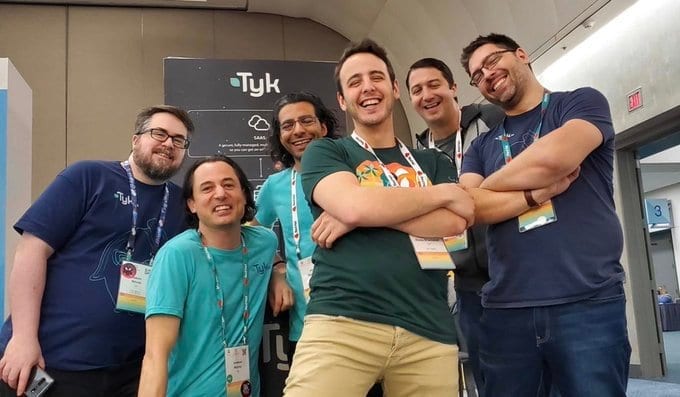
I just got back from my first KubeCon experience and it was fantastic. Tyk was there to sponsor for the first time, with a heap of engineering expertise and the best stickers in San Diego (as voted for by our team…)
I couldn’t help but compare my time in San Diego with Tyk to my first ever AWS re:Invent conference back in 2014 with Relus Cloud. In both situations, it was very apparent that there was something amazing abuzz and that the company I represented was onto a business model that had an unbelievable upside. You could just feel the excitement in the air with people from all over the world coming together to share their experiences, learn from each other, and be a part of a special ecosystem.
Now I’m not saying that Kubernetes is on the same path as AWS in terms of platforms, however, from an event standpoint, the buzz and feel of KubeCon was eerily similar to what I felt at that first re:Invent conference.
I would estimate there were around 12,000-14,000 attendees at re:Invent in 2014 (there will be 55K this year). Estimated KubeCon attendance this past week: 12,000. Estimated number of re:invent sponsors in 2014: ~250. Sponsors at this year’s KubeCon: ~200. Not at all dissimilar!
I am sure I could find more statistics to compare, but from a high level, here is what stood out to me: Innovation. Opportunity. Uncertainty. This is not a review about cool Kubernetes focused technologies and vendors, instead I thought I’d share with you a business and market view of the Kubernetes ecosystem, and what I observed over the week.
Innovation
It’s safe to say that the Cloud Native Computing Foundation appears to be as healthy as it has ever been. The fact that 12,000+ people showed up in San Diego to talk about Kubernetes is impressive.
Building cloud native open source software is not just the cool thing to do- it’s fundamentally changing the way Enterprises do business. There were two sides to the expo hall: one side for more mature vendors and businesses building products and revenue models around the Kubernetes ecosystem, and the other side for the same type of company but in an earlier stage of their startup life cycle.
On both sides, it was apparent that the level of innovation taking place in the Kubernetes ecosystem is off the charts. But it wasn’t just startups, as there were plenty of them, it was also the legacy vendors that were releasing new products, features, and tools designed to make life easier in a containerised world.
Opportunity
With 200 sponsors attending KubeCon, it would be hard to come up with a guess as to the total market cap represented but with sponsors like AWS, Google, IBM, Microsoft, and Intel, it’s safe to say the number is in the trillions. Yes, that’s right, trillions! (Goes without saying, but since I am a master of the obvious, we at Tyk are only looking for a teeny, tiny, sliver of this market cap).
But it isn’t just the big companies looking to cash in on the rush to microservice-based architectures, it’s also all of the engineering-driven startups that stumbled upon a business problem and had the guts to go out on their own to solve that problem and build a company around it.
Innovation is great. But having the courage to harness that innovation into a product or service to help other companies solve the same problem you ran into is something that gets me and most entrepreneurs really excited, especially since we are just scratching the surface of the potential out there in the microservices-friendly market.
Fast forward 3-4 years and I am guessing we’ll look back at the 2019 sponsor list and there will be some billion dollar exits along with some astounding failures (RIP Docker Enterprise -once valued over $1B and recently sold for something not starting with a B). Check out this amazing Interactive Landscape map from the CNCF (and feel free to ping me with your predictions on who succeeds and who fails).

Probably the best stickers of KubeCon 2019
Uncertainty
Yet, for all of the innovation and opportunity that was evident, there remains a boatload of uncertainty.
Just as in 2014, where companies were still at the beginning of their public cloud journey, enterprises are only really just dipping their toes into Kubernetes and the joys of automating application deployment and management.
Many enterprises continue to take an approach of not building or rolling their own tools and instead looking at the ecosystem of vendors to fit into their CI/CD pipelines. (Shameless plug alert, check out Martin’s video on how to use Tyk Kubernetes Ingress Controller. After all, there’s no better API gateway & Life Cycle Management Platform than Tyk 😉 )
This means that though Enterprises are adopting and moving into the microservice world, they aren’t jumping in head first just yet. After all, good tools are great, but good people that know how to use the good tools are even greater. And just as with the early days of public cloud adoption, people that know what they are doing are going to be at a premium.
It’s then inevitable that enterprises will continue to take their time and make sure that they adopt new development techniques in a conservative fashion – although what it means to be conservative is now measured in days and weeks, as opposed to months and years.
Overall, it was a great week shared with several other Tyklings, and one that keeps me extremely optimistic about our company and our future in the ecosystem. We are proud partners of the CNCF and we will continue to innovate and stay ahead of the cloud native game.
As excited as I was to be part of the public cloud community leading the pack back in 2014, I am even more excited about being part of the Cloud Native Foundation ecosystem today and helping Tyk lead the way for connecting every system in the world with our API Gateway & Management Platform!

Me and the Tyk team at KubeCon 2019
